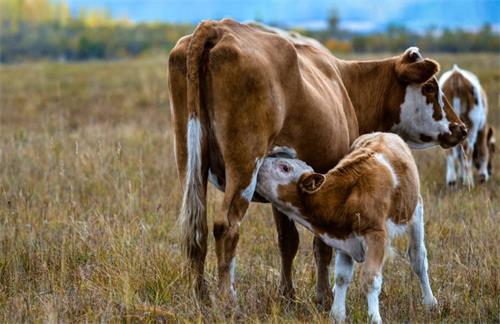The incidence of miscarriage in artificial insemination of dairy cows is about 10%, and the incidence of miscarriage in embryo transplantation is about 15%. The causes of miscarriage are divided into two categories: infectious miscarriage and non-infectious miscarriage. Infectious miscarriage is a symptom of infectious diseases, and most miscarriages are non-infectious miscarriages. The causes of non-infectious miscarriage include: nutritional miscarriage, traumatic miscarriage, toxic miscarriage, drug-induced miscarriage, and symptomatic miscarriage. According to the age of miscarriage and the changes in the fetus, miscarriage can be divided into the following types, and the miscarriage of cows can also be checked by cattle B-ultrasound.
Hidden miscarriage, also known as early embryonic death, occurs in the first 1-2 months of pregnancy, accounting for about 25% of miscarriages. Early embryonic death can be identified by cattle B-ultrasound.
Premature delivery is the discharge of unchanged dead fetuses, which occurs in the middle and late stages of pregnancy. This is the most common type of miscarriage, accounting for about 49.8% of miscarriages. In the middle and late stages of pregnancy, cattle B-ultrasound is needed for regular inspection to see the condition of the fetus.
Imported B-ultrasound for cattle
After the fetus dies, it is retained in the uterus. Due to the closure of the cervix, the water of the fetus is absorbed and mummified. Dead fetuses often occur in 4-5 months of pregnancy, accounting for about 24% of miscarriages. Mummification is easy to judge on B-ultrasound for cattle, and it can be basically diagnosed.
After the fetus dies, due to the invasion of non-corrupt bacteria into the uterus, the soft tissue of the fetus is dissolved and lost, while the bones are retained in the uterus. The age of the dead fetus is similar to that of the dry fetus, accounting for about 0.9% of miscarriages.
After the fetus dies, due to the invasion of putrefactive bacteria into the uterus, the fetus is corrupted and decomposed, and a large amount of gas is produced to enlarge the fetus and cause dystocia. It is the most dangerous type of miscarriage, which is extremely rare in clinical practice, accounting for about 0.3% of miscarriages. This requires farmers to improve the nutritional level of pregnant cows in the process of raising dairy cows, carry out reasonable management, prohibit feeding corrupt, frozen feed and poisonous plants, not drinking ice water, prevent the occurrence of problems such as improper care during strenuous exercise and long-distance transportation, and need to use B-ultrasound for cattle for frequent inspection.








